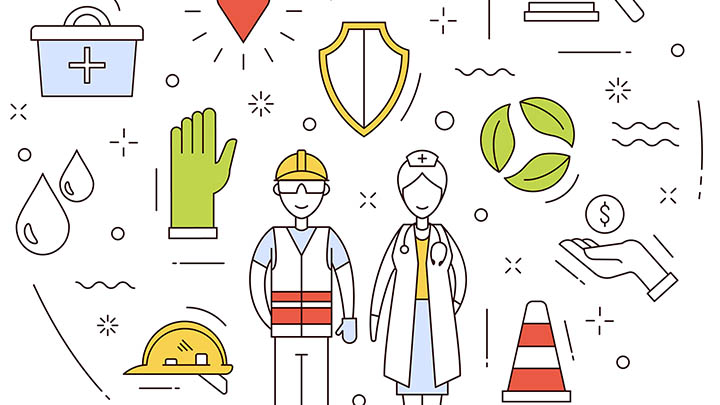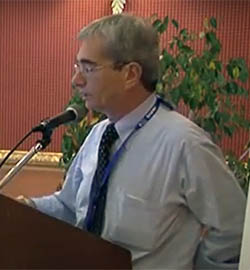
Professor Pierluigi Cocco
 Pierluigi is an Honorary Professor of Occupational Medicine at the Centre for Occupational and Environmental Health at Manchester. Here, he talks about his research into occupational health, and occupational and environmental epidemiology.
Pierluigi is an Honorary Professor of Occupational Medicine at the Centre for Occupational and Environmental Health at Manchester. Here, he talks about his research into occupational health, and occupational and environmental epidemiology.
What are your research interests, and why are you interested in these areas?
I have been particularly interested in workers’ health and safety since completing my medical studies.
I consider occupational health the most attractive medical speciality because of its multidisciplinary aspects. Any new achievement in life sciences and technological progress implies new occupational health challenges and applications in practice. The occupational physician never stops learning and applying the advances in knowledge.
Occupational and environmental epidemiology is of paramount relevance for identifying the hazards and preserving the health and wellbeing of the workforce, thus sustaining the economy and defending the wellbeing of the whole community.
Based on epidemiological findings, it is possible to implement preventive actions to effectively modify or remove health hazards and save the workers and the whole population from suffering.
What are you currently working on?
I am currently involved in several research projects. The main project started more than two decades ago as a part of an initiative of the International Agency for Research on Cancer on the aetiology of lymphomas. This project eventually joined the InterLymph Consortium, promoted by the US National Cancer Institute.
Within InterLymph, I conduct projects on the potential occupational and environmental determinants of lymphomas, such as ionizing radiation, pesticides, solvents, formaldehyde, circadian disruption, and transmissible agents.
After investigating the relationship between circadian disruption due to nightshift work and the risk of lymphoma, I developed a deep interest in the complex relationship between sleep deprivation and its effects on the immune system, mental health, and cardiovascular health.
A third major project is related to microRNAs in the exhaled breath condensate as early biomarkers of asbestos-related malignant and non-malignant pulmonary diseases through a follow-up of about 400 workers formerly exposed to asbestos.
What have been the highlights of your research career so far?
I started developing new techniques of retrospective assessment of occupational exposure when collaborating with Mustafa Dosemeci and Trish Stewart at the Occupational Epidemiology Branch of the US National Cancer Institutes.
In more recent years, I applied existing statistical methods to up-level the ability to draw inference by combining trends with independent exposure metrics. I consider this my major contribution to occupational epidemiology.
My follow-up study of a large cohort of DDT applicators is one of the two existing cohort studies on DDT-exposed workers. Based on a detailed exposure assessment, this study raised doubts about the carcinogenicity and the reproductive effects of DDT on humans at the workplace exposure level.
DDT is still an effective, inexpensive, WHO approved anti-malarial weapon, and my study contributed to balancing its effectiveness with that of alternative, more expensive and less studied molecules.
Other achievements in my research career include the identification of the occupational risk factors for lymphoma, the study of the complex interaction between silica and silicosis in increasing lung cancer risk, and the protective effect of the genetic deficiency of the glucose-6-phosphate dehydrogenase enzyme against cardiovascular disease.
Statin therapy aims to inhibit cholesterol synthesis, which is one of the effects of the genetic condition of G6PD deficiency and was, therefore, introduced for preventing cardiovascular diseases in individuals at risk.
What’s coming up next for you?
In the next few years, I will be engaged with a study of adaptation to the loss of the dark/light cycle in researchers during a winter mission at the Concordia base in Antarctica.
Problems among these researchers include sleep disruption, isolation, and the consequent mental health outcomes. This study comprises an important biological part of the research, as it involves things such as monitoring the salivary melatonin and cortisol circadian rhythm, biomarkers of oxidative stress, polymorphisms in the CLOCK genes and other gens, and the methylome.
These bioassays will be coupled with instrumental measurements, including polysomnography and actigraph records and ECG measurements. The outcome of this project will be testing the creation of an artificial rhythm with activity, meals, and leisure time schedules, supported by new illumination techniques.
What are the benefits of doing research at The University of Manchester?
The main advantage of academic work is independence. Having no links with interested parties nor political or academic pressure to address specific research fields allows us to expand into areas not otherwise considered, following no other drivers but the researcher’s own interests and curiosity. This is how science progresses in all fields.
I am grateful to the University for recruiting me as an honorary professor after my retirement from academia in Italy, and for giving me the opportunity to continue teaching as well as conduct and publish my research.
Learn more about Pierluigi’s research in ResearchGate.






0 Comments